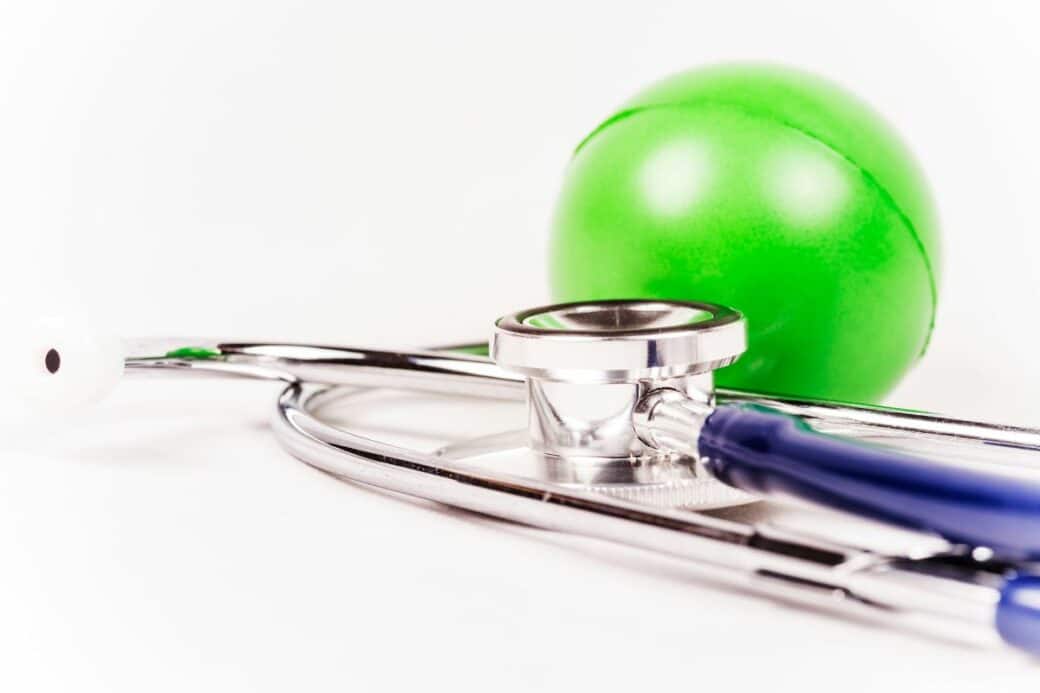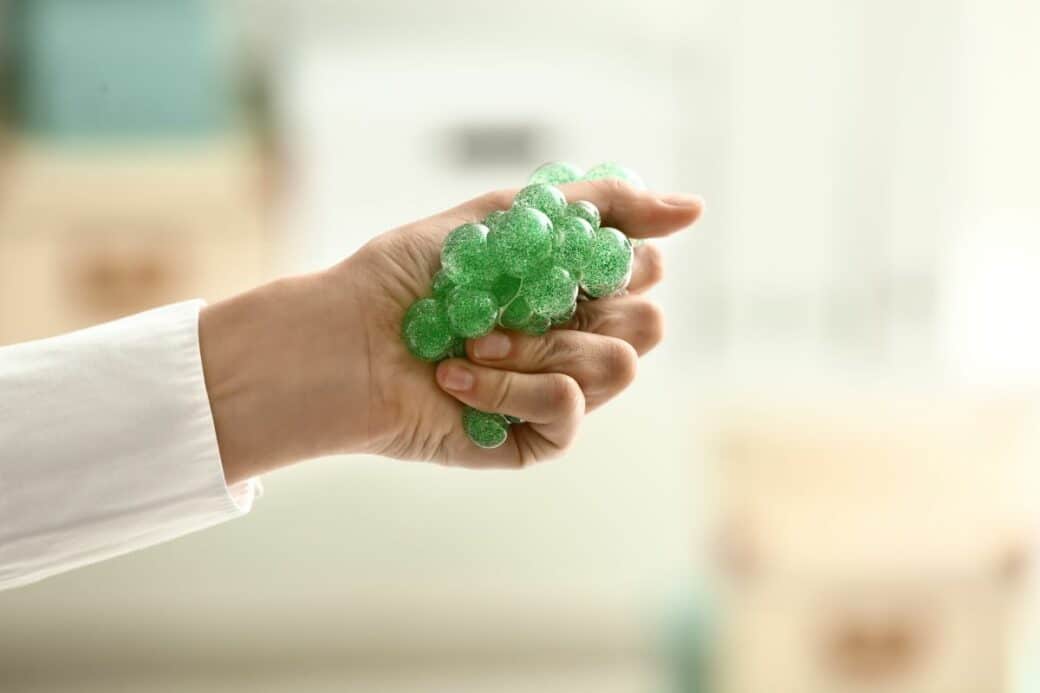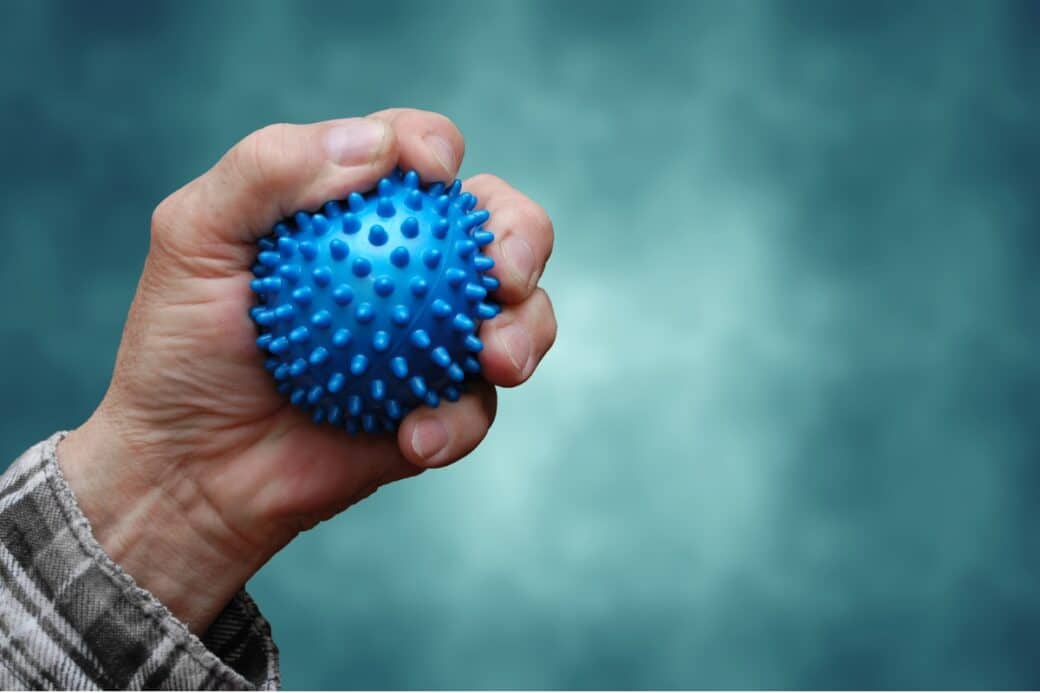Are you feeling overwhelmed and in dire need of a stress reliever? Look no further than stress balls! Whether it be at work, during exams, or when facing any difficult situation, stress balls have become a popular tool to help combat stress and anxiety. But what exactly are they? In this article, we will explore the concept and definition of stress balls, unravelling their beneficial properties and explaining how they can be your perfect companion in those tense moments. Get ready to embrace a world of relaxation and discover the magic of stress balls!

Stress Balls Definition: Definition of Stress Balls
Theoretical Definition
Stress balls, also known as stress relievers or squeeze balls, are small, handheld objects designed to be squeezed or manipulated to help alleviate stress, tension, and anxiety. They are typically made of a soft and pliable material that provides a satisfying tactile sensation when squeezed. Stress balls come in various shapes, sizes, and textures, catering to different preferences and needs. They are often used as a therapeutic tool and can offer relief from physical and psychological stress.
Physical Attributes
Stress balls are typically made of foam or rubber materials that offer a soft and malleable texture. These materials are comfortable to hold and flexible enough to be easily squeezed and manipulated. The shape of stress balls can vary widely, ranging from classic round designs to more elaborate shapes like animals, fruits, or objects. Additionally, stress balls may feature different textures, such as smooth, bumpy, or ribbed surfaces, providing additional sensory stimulation during use.
Varieties Present
Over the years, stress ball manufacturers have embraced creativity and innovation, leading to a wide range of varieties to suit individual preferences. Some stress balls have unique features like aromatherapy inserts, which release soothing scents when squeezed. Others incorporate gel-filled centers or even have built-in resistance bands for added exercise benefits. The variety of stress balls available ensures that there is a perfect option for everyone, regardless of their personal preferences and needs.
Historical Background
Historical Origins
The origin of stress balls can be traced back to ancient times when traditional Chinese medicine used small weighted balls called Baoding balls. These Chinese meditation balls were believed to stimulate acupressure points in the hands, promoting relaxation and relieving stress. Similarly, ancient Greek and Roman civilizations practiced using “worry stones” or smooth, polished stones that individuals would rub between their fingers to relieve anxiety and stress.
Cultural Significance
Throughout history, different cultures have recognized the importance of stress relief and have developed their own versions of stress balls. In Chinese culture, the Baoding balls remained a popular stress-relieving tool, often carried and used by individuals to improve hand coordination and mental focus. In Japanese culture, stress-reducing squishy toys known as “kawaii” became popular, featuring cute characters that people could squeeze to alleviate tension and anxiety. These cultural practices and beliefs highlight the long-standing recognition of the therapeutic benefits of stress balls.
Modern Adaptations
As stress management techniques gained popularity in the modern era, stress balls evolved to meet the changing needs and preferences of individuals. With advancements in manufacturing technology, stress balls became more accessible, affordable, and diverse in design. Manufacturers began to incorporate various materials, textures, and colors into stress balls, catering to different tactile preferences and aesthetic preferences. The modern adaptations of stress balls have made them a widely recognized and accessible tool for stress relief and relaxation.

Purpose of Stress Balls
Stress Relief Purpose
The primary purpose of stress balls is to provide a tangible and convenient outlet for stress relief. When you feel overwhelmed, anxious, or tense, squeezing a stress ball can help redirect your focus and release built-up tension. The repetitive squeezing and releasing motion engage your muscles, promoting relaxation and providing an outlet for bottled-up stress. The physical act of squeezing a stress ball can be satisfying and calming, helping to reduce stress levels and restore a sense of calm.
Therapeutic Uses
Stress balls have also been incorporated into various therapeutic practices and interventions. Mental health professionals, such as therapists and counselors, often recommend stress balls as a tool for individuals coping with anxiety, depression, or trauma. The tactile sensation and rhythmic squeezing motion can help soothe and ground individuals in moments of emotional distress. Stress balls can be particularly beneficial for individuals who have difficulty expressing or managing their emotions verbally.
Exercise Tool
Beyond stress relief and therapy, stress balls can also be used as exercise tools. Regularly squeezing and manipulating stress balls can improve hand and finger strength, dexterity, and coordination. This is especially beneficial for individuals recovering from hand injuries or conditions like arthritis. Strengthening the muscles in the hands and fingers can enhance overall grip strength and fine motor skills. Incorporating stress balls into hand exercises can be a simple yet effective way to maintain or improve hand function and mobility.
How Stress Balls Work
Physiological Impact
The physical act of squeezing a stress ball triggers a reflex response in the body. When pressure is applied to the stress ball, the muscles in your hands, fingers, and forearms contract. This contraction activates the stretch reflex, which can help relax tense muscles and reduce muscle stiffness. Additionally, the rhythmic squeezing and releasing motion can promote blood circulation to the hands and fingers, relieving any built-up tension and promoting a sense of relaxation.
Psychological Aspects
The psychological impact of using stress balls stems from the concept of the mind and body connection. Engaging in a repetitive motion, such as squeezing a stress ball, can serve as a form of distraction from stressful thoughts or situations. Focusing on the physical sensation and repetitive motion can help redirect your attention away from stressors and promote a sense of calm. The act of squeezing a stress ball can also create a psychological association with stress relief, training the mind to associate the motion with relaxation and reducing stress.
The Stress-Pain Connection
Stress balls can also help alleviate pain that may be linked to stress and tension. Chronic stress and muscle tension can contribute to conditions such as tension headaches, jaw pain, and muscle soreness. By using stress balls regularly, you can help release muscle tension and improve blood flow to specific areas prone to pain. The combination of the physical and psychological impact of stress balls can help break the stress-pain cycle, providing relief from both physical and emotional discomfort.
Fabrication Materials
Traditional Materials
Originally, stress balls were made from materials like Chinese Baoding balls, which were typically made of metal or stone and had a weighted interior. However, in modern times, stress balls are predominantly made of foam or rubber materials. Foam stress balls offer a soft and squishy texture, providing a cushioning effect when squeezed. Rubber stress balls are more durable and resistant to wear and tear, making them suitable for long-term use. Both foam and rubber stress balls are lightweight, portable, and easy to grip, making them convenient for stress relief purposes.
Modern Materials
In recent years, stress ball manufacturers have expanded their selection to include stress balls made from alternative materials. Some stress balls are made from gel-filled casings, which offer a unique tactile sensation when squeezed. The gel can also retain cold or heat, providing additional therapeutic benefits such as soothing sore muscles or cooling down during hot weather. Other materials used in modern stress balls include thermoplastic elastomers (TPEs), which offer a more eco-friendly and versatile option compared to foam or rubber.
Eco-friendly Alternatives
As sustainable practices become increasingly important, manufacturers have started offering eco-friendly stress ball options. These stress balls are made from biodegradable materials or recycled materials, minimizing their environmental impact. Eco-friendly stress balls often incorporate natural fillings like rice or sand, providing a more organic and earth-friendly stress-relieving experience. These eco-conscious options allow individuals to enjoy the benefits of stress relief while making a positive contribution to the environment.
How to Use Stress Balls
Proper Gripping Techniques
To maximize the benefits of stress balls, it is important to use proper gripping techniques. Start by holding the stress ball in the palm of your hand, allowing your fingers to rest naturally over the surface. Avoid gripping the stress ball too tightly, as this can create additional tension in your hand and forearm. Instead, aim for a relaxed grip that allows for comfortable squeezing and manipulation. Experiment with different finger positions and pressures to find a grip that feels most comfortable for you.
Timing and Duration of Use
Using stress balls for stress relief does not require a strict time commitment. They can be used as needed throughout the day, whenever you feel stressed, anxious, or overwhelmed. Consider incorporating short stress ball sessions into your daily routine, such as taking a moment to squeeze the ball during breaks at work or while watching television. It is important to listen to your body and use stress balls for a duration that feels comfortable and effective for you.
Incorporating into Daily Routine
To establish a consistent stress relief routine, find ways to incorporate stress balls into your daily activities. Keep a stress ball within arm’s reach in various locations, such as your desk, car, or bedside table. This serves as a visual reminder to engage in stress relief whenever it is needed. You can also integrate stress ball use with other calming activities, such as deep breathing exercises or meditation. By combining stress ball use with other relaxation techniques, you can create a comprehensive stress management routine.
Safety Considerations
Potential Risks
While stress balls are generally safe to use, it is important to be aware of potential risks. Individuals with certain medical conditions, such as carpal tunnel syndrome or arthritis, should consult a healthcare professional before using stress balls. Excessive squeezing or using stress balls that are too firm can potentially exacerbate these conditions. Additionally, if you experience any pain or discomfort while using a stress ball, it is important to stop and assess if the pressure or duration of use is appropriate for your individual needs.
Who Should Avoid Use
Certain individuals may need to avoid or modify their use of stress balls. Individuals with hand injuries or conditions that cause inflammation and pain should consult with a healthcare professional before using stress balls. Pregnant individuals should also use caution when using stress balls, as excessive pressure or gripping may be uncomfortable or cause strain on the joints. If you have any concerns about whether stress balls are appropriate for your specific situation, it is advisable to seek guidance from a healthcare professional.
Proper Care and Storage
To maintain the cleanliness and effectiveness of stress balls, it is important to practice proper care and storage. Keep stress balls in a clean and dry environment when not in use to prevent the growth of bacteria or mold. Foam stress balls can be gently cleaned with a mild soap and water solution, while rubber stress balls can be wiped down with a damp cloth. Avoid exposing stress balls to extreme temperatures or excessive sunlight, as this can cause the materials to deteriorate over time. Regularly inspect your stress balls for any signs of wear or damage and consider replacing them if necessary.
Choosing the Right Stress Ball
Sizing and Weight
When choosing a stress ball, consider the size and weight that will be most comfortable for your hand size and strength. Larger stress balls may be easier to grip and squeeze for individuals with larger hands, while smaller stress balls may be more suitable for those with smaller hands. Similarly, the weight of the stress ball can impact the resistance and overall feel during use. Experiment with different sizes and weights to find the stress ball that feels most comfortable and effective for you.
Material and Texture Preferences
The material and texture of a stress ball can greatly influence the tactile experience and overall effectiveness. Foam stress balls offer a softer and squishier texture, providing a more cushioned feel when squeezed. Rubber stress balls, on the other hand, offer a firmer and more rigid texture, providing greater resistance and durability. Consider your personal preferences and sensory needs when selecting a stress ball. Some individuals may prefer a smooth surface, while others may find a bumpy or ribbed texture more stimulating and satisfying.
Pricing and Brand Comparisons
Stress balls are available at various price points, ranging from inexpensive options to higher-end, branded stress balls. Consider your budget and the level of quality or special features you desire when making a purchase decision. It can be helpful to read reviews and compare different brands to assess their reputation and customer satisfaction. Keep in mind that the most expensive stress ball may not necessarily be the best fit for your needs, so prioritize finding a stress ball that offers the right combination of comfort, durability, and affordability.
Impact on Mental Health
Anxiety Reduction
One of the significant benefits of stress balls is their ability to reduce anxiety levels. The physical act of squeezing a stress ball can help release nervous energy and provide a sense of control during moments of anxiety or panic. The rhythmic motion and tactile sensation of squeezing a stress ball promote a calming effect on the mind and body. This simple yet effective technique can redirect attention away from anxious thoughts and bring a sense of grounding and stability.
Boosting Focus and Concentration
Beyond anxiety reduction, stress balls can also enhance focus and concentration. Engaging in a repetitive motion, such as squeezing a stress ball, can help improve cognitive function and increase attention span. The rhythmic squeezing motion stimulates the brain and activates the hand-eye coordination, stimulating neural pathways and sharpening mental focus. As a result, stress balls can be particularly beneficial for individuals who struggle with maintaining focus or staying alert during tasks or activities.
Mood Enhancement
Stress balls have the potential to uplift mood and promote a positive emotional state. The physical act of squeezing a stress ball triggers the release of endorphins, which are hormones responsible for feelings of pleasure and happiness. The combination of the physical sensation, repetitive motion, and the release of endorphins can create a mood-enhancing effect. Additionally, stress balls can serve as a portable and discreet tool for emotional regulation, providing individuals with a healthy outlet for managing stress and improving overall mood.
Overall Benefits of Stress Balls
Personal Reviews and Experiences
Many individuals who incorporate stress balls into their daily routine report significant benefits in terms of stress reduction, relaxation, and overall well-being. Personal reviews and experiences highlight the versatility and effectiveness of stress balls as a stress management tool. Users often describe the tactile sensation and repetitive squeezing motion as soothing and therapeutic. Additionally, stress balls are praised for their easy portability, allowing individuals to access stress relief anytime, anywhere.
Medical and Health Adherence
Stress balls are not only beneficial for managing psychological stress, but they can also contribute to physical health and adherence to medical treatments. For individuals with conditions like arthritis, physiotherapists often recommend stress balls as hand exercises to improve hand strength and dexterity. Stress balls can also serve as a distraction technique during medical procedures or treatments that may induce anxiety or discomfort. By engaging the hands and redirecting attention, stress balls can help individuals better cope with medical interventions.
Future Research Directions
While stress balls have gained popularity as a stress management tool, there is still much to learn about their specific mechanisms of action and potential applications. Future research could focus on conducting controlled studies to measure the physiological and psychological effects of using stress balls. Additionally, investigating the benefits of different materials, textures, and shapes of stress balls could help tailor stress ball usage to individual needs and preferences. Further research in these areas could contribute to a deeper understanding of stress balls’ therapeutic potential and lead to the development of more effective stress management interventions.




